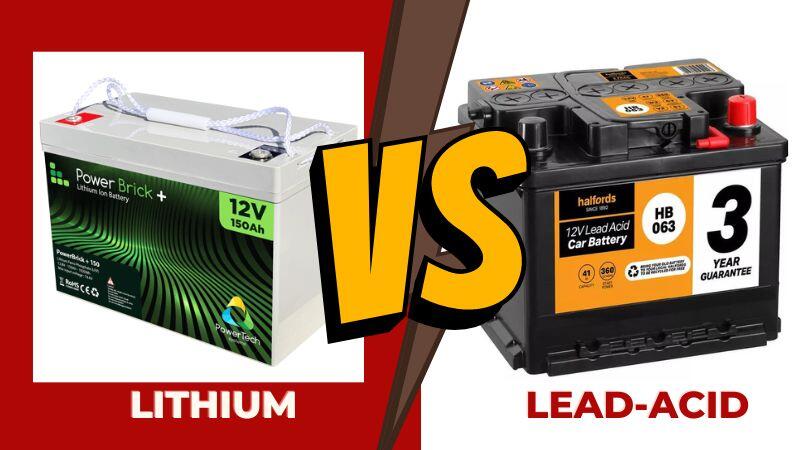In recent years, the rapid advancement of battery technology has fueled the rise of portable electronic devices, electric vehicles, and renewable energy systems. Two prominent battery chemistries that have emerged as contenders for various applications are lithium-ion (Li-ion) batteries and lead-acid batteries. This article aims to provide an in-depth comparison of these two battery technologies, considering factors such as energy density, cycle life, environmental impact, safety, and cost.
Differences Between Lithium and Lead-Acid Batteries
| Factors | Lithium Battery | Lead Acid Battery |
|---|---|---|
| Energy Density | 150-200 Wh/kg | 30-50 Wh/kg |
| Cycle Life | 500-1,500 cycles | 300-500 cycles |
| Environmental Impact | Lower impact, no toxic heavy metals | Higher impact contains toxic lead |
| Safety | The potential for thermal runaway requires safety measures | Less prone to thermal runaway, risk of acid spills |
| Cost | Higher upfront cost, better long-term value | Lower upfront cost may require more maintenance |
Energy Density
Energy density refers to the amount of energy that can be stored in a battery per unit volume or weight. Lithium batteries boast significantly higher energy densities compared to lead-acid batteries. On average, Li-ion batteries have an energy density of 150-200 Wh/kg, whereas lead-acid batteries typically range between 30-50 Wh/kg. This higher energy density gives lithium batteries a clear advantage in terms of providing more power in a smaller and lighter package.
Cycle Life
Cycle life determines the number of charge and discharge cycles a battery can undergo before its capacity significantly degrades. Lithium batteries tend to have a longer cycle life compared to lead-acid batteries. While lead-acid batteries typically offer 300-500 cycles, Li-ion batteries can last for 500-1,500 cycles or more, depending on the specific chemistry and usage patterns. This longevity makes lithium batteries more suitable for applications that require frequent charge and discharge cycles, such as electric vehicles.
Environmental Impact
The environmental impact of a battery includes factors such as raw material extraction, manufacturing processes, and end-of-life disposal. Lead-acid batteries contain toxic substances like lead, which poses a significant environmental and health risk if mishandled or improperly disposed of. On the other hand, lithium batteries have a lower environmental impact due to their lower weight, higher energy density, and the absence of toxic heavy metals. However, the disposal of lithium batteries still requires proper recycling methods to recover valuable materials and prevent potential environmental contamination.
Safety
Both lithium and lead-acid batteries have safety considerations, but they differ in their risk profiles. Lithium batteries are generally considered more volatile due to the potential for thermal runaway and the risk of fire or explosion if not properly handled or charged. However, extensive research and development have led to the implementation of advanced safety features in Li-ion batteries, reducing the occurrence of such incidents. Lead-acid batteries, while less prone to thermal runaway, carry the risk of acid spills, which can be harmful to humans and the environment.
Cost
Cost is a critical factor in the selection of battery technologies. Initially, lead-acid batteries have a lower upfront cost compared to lithium batteries. However, when considering the total cost of ownership, including factors like cycle life and maintenance, lithium batteries often offer better value over the long term. Furthermore, as lithium battery production scales up and technology improves, the cost is expected to decrease further, narrowing the price gap between the two technologies.
Conclusion
Lithium batteries and lead-acid batteries are two prominent battery technologies with distinct characteristics and applications. Lithium batteries excel in terms of energy density, cycle life, environmental impact, and overall performance. Lead-acid batteries, on the other hand, are still widely used in applications where cost is a primary concern. As technology progresses and economies of scale are realized, lithium batteries are expected to dominate the market in various industries, ranging from consumer electronics to electric vehicles and renewable energy systems. However, it is essential to continue researching and implementing safety measures and proper recycling methods to maximize the benefits and minimize the drawbacks of these battery technologies in the future.




